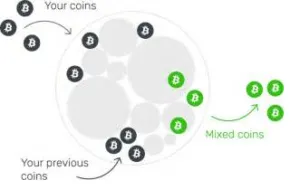For starters, you need to take care of the address. It should not be connected to you as a person.
Say someone sees a payment going from address A to address B. Well great, there is nothing they can do, as nobody knows that Alice is owning address A. Once there is a connection between Alice and address A, the protection is gone.
This happens when you sign up for an exchange. Usually, they require you to provide KYC documents and as a result, your passport connects to your Bitcoin address.
The second level of protection works on the transaction itself.
When A sends money to B, it is observable.
The idea behind a Bitcoin Mixer is that lots of people send money to it. In the Mixer, these funds arrive and mix and then the Mixer pays the target addresses. That way, nobody knows whose money arrived at which address.

So, even if you know that Alice owns A, you have no idea if she paid money to E or D.
On a technical level, there are a few different ways to implement this. The core feature is is anonymity. That is why it is necessary to make sure the service is not compromised and analyzed.
To gain trust, a lot of Mixers choose an open source structure. That way you can ensure your users that you are not going to steal their money.
In the Mixer model, transaction fees occur twice (sending to the Mixer and from there to the target address).
To increase this protection, you can connect Mixers.
So, your money goes from one Mixer to the next and will eventually reach the recipient.
The Bitcoin ledger is public. In the years to come, authorities might find out who owned some addresses and with that, they could trace back transactions. But if a Mixer was used in transactions, it would become far more difficult.

Caution
Bitcoin Mixers are technically interesting. They bring privacy and anonymity. However, they also help criminals hide from authorities.